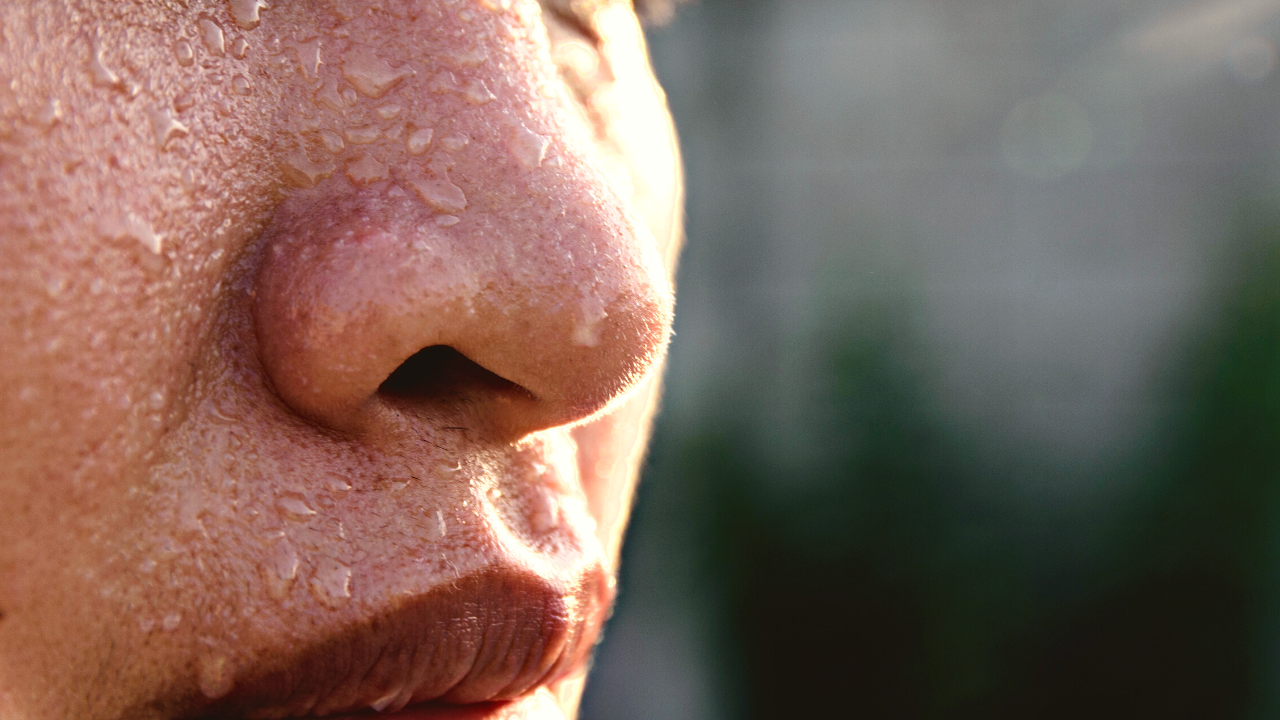When gerontologist Robert Butler first coined the term “ageism” in 1969, he sought to skewer highly visible forms of age-based discrimination in an affluent D.C. suburb. A proposed housing project for the elderly poor, which included Black residents, met the town’s staunch resistance.
For Butler, who went on to found the National Institute on Aging, the residents’ protests elucidated a form of age-based stereotyping and oppression that went beyond the suburban town’s racism.
“People talk about aging gracefully…So, naturally, they don’t want to look at people who may be palsied, can’t eat well, who may sit on the curb and clutter up the neighborhood with canes,” Butler told a Washington Post reporter at the time.
Butler’s views set out the standard understanding of ageism, commonly defined as stereotyping, prejudice and discrimination towards others on the basis of age. It occurs at a structural level, in institutions and their policies, and at a quotidian level, in mass media and interpersonal relations. Today, 82 percent of older Americans report that they regularly experience everyday ageism.
Over the past two decades, though, researchers have exposed a more insidious side effect of prejudice against older adults. Ageism, studies demonstrate, impacts the physical and cognitive health of elders in significant and measurable ways, cutting lifespans by years.
The link between ageism and health emerged in 2002 out of a rural midwestern town and the research of Becca Levy, an epidemiologist and psychologist at Yale University. Levy dates the genesis of her research interest to a graduate fellowship in Japan, where the country’s citizens have the second longest life span globally. While there, Levy observed “so much celebration of people becoming older and older,” she stated in an interview.
“I then became really interested in the possibility that how a culture treats its oldest members can have an impact on health,” Levy elaborated.
To investigate this, Levy and colleagues used data from an Ohio-based longitudinal study of aging and considered the effect of participants’ self-perceptions of aging on their longevity. They theorized that the internalization of age stereotypes, or ageism in society, could fuel negative beliefs about aging that led to real physiological outcomes.
“You generally don’t have a prejudice against yourself unless it’s pervasive in the culture around you,” stated Dr. Louise Aronson, a geriatrician and professor of medicine at the University of California, San Francisco. The notion that older adults are necessarily weaker or more disabled, Dr. Aronson explained, is a highly prevalent ageist assumption. Not only are such stereotypes often internalized by Aronson’s own patients, but studies demonstrate that even children as young as four are aware of age stereotypes, viewing older adults as slow and confused.
The effect of such ageist beliefs is significant. Levy and colleagues demonstrated that those with more positive self-perceptions of aging lived on average seven and a half years longer than those with less positive age beliefs. The results held true even after controlling for age, gender, socioeconomic status, loneliness, and overall health in study participants.
Research ballooned from there: the longevity findings have been replicated in 10 countries, among them Australia, China, and Germany. Researchers in these countries further identified that negative self-perceptions of aging predicted greater risk of future disability and physical illnesses. Levy’s team also went on to identify an association between ageism and cardiovascular events, such as heart failure and stroke. Those holding negative age beliefs were almost twice as likely to experience a cardiovascular event when they turned 60 than those with positive age beliefs.
Ageism’s effects also extend beyond physical health. Using health records from another longitudinal study of aging, Levy and team found that patients with more negative age stereotypes had more biomarkers for Alzheimer’s than those with more positive age beliefs. These included a shrinking hippocampus, or the area of the brain associated with memory, and greater plaques and tangles.
To understand how the culture surrounding aging could produce such tangible health outcomes in older adults, Levy developed what she calls the “stereotype embodiment theory.” Her team has investigated how age beliefs follow psychological, behavioral, and physiological pathways to impact health.
At the psychological level, Levy and her colleagues found that age-related stereotypes in older adults create expectations that “act as self-fulfilling prophecies” about their abilities. The will to live and other positive beliefs about aging motivate healthy behaviors, “like taking prescribed medications and exercising,” Levy stated.
“If you believe your life is worthwhile and that aging can be a good thing,” Aronson said, “you’re going to eat healthier foods and you’re going to keep up social relationships and try and have a meaningful day.”
The findings of Thomas Perls, gerontologist and founder of the New England Centenarian Study, lend further credence to Levy’s work. While genetics do factor into lifespan, especially with older and older ages, “much of how well you age is in your hands,” Perls said. Research shows that genetics explain only about 25 percent of variation in longevity, while the rest owes to environmental and behavioral factors. Perls explained that the centenarians he studies engage in healthy behaviors and have more optimistic views of aging.
When negative age beliefs become dominant and healthy practices are neglected, ageism’s effects on the physiological pathway are visible.
“We have found that those who take in more positive beliefs tend to have lower biomarkers of stress, or lower cortisol levels, lower cardiovascular response to stress, and lower CRP or inflammation,” Dr. Levy said.
“That inflammation then impacts all of the different organs and systems in our body and makes us more vulnerable to disease and more vulnerable to illness,” Tracey Gendron, chair of the gerontology department at Virginia Commonwealth University, stated.
“Ageism has been unchallenged for a really long time,” added Gendron. As she also explains in her recent book, “Ageism Unmasked,” media representations of aging “as something to be feared and have shame around” are one of the greatest sources of everyday ageism.
“Somebody will say something like, ‘you look great for your age,’ or ‘you haven’t aged a bit,’ or ‘you’re too young to understand this.’ That’s all ageism––every time we’re making an assumption or a judgment based on being older or younger,” Dr. Gendron stated in an interview.
For both Gendron and Perls, the anti-aging industry projects especially harmful understandings of aging. To market anti-aging “snake oils” like growth hormone and testosterone, Dr. Perls stated, the anti-aging industry began portraying aging as a curable “disease” in the late eighties and early nineties.
But Perls says that ageist beliefs are encouraged throughout most doctors’ medical education.
“I was really brought up in a medical culture that believed this idea that the older you get, the sicker you get,” Perls said in an interview. Yet after founding the New England Centenarian Study, the longest-running comprehensive study of centenarians and their families, Perls and his colleagues observed that this medical belief was a “falsehood.”
“What we observe is that the older you get, the healthier you’ve been,” Perls said. In other words, those with exceptional longevity have a lifelong record of good health. Perls found that 90 percent of all of the centenarians enrolled in the study were still independently functioning and “disability free” at the average age of 93 years.
These findings challenge structural ageisms. Aronson points to policies that set a national retirement age but which fail to consider individual ability, or a healthcare system which funds treatment for older adults who experience falls but will not fund prevention (i.e. resistance training, physical therapy).
Part of the reason that ageism is still pervasive, Aronson explained, is the lack of awareness regarding its health outcomes. And even in the medical community, some feel that further research is necessary.
“In science, the gold standard is proving something prospectively,” Aronson stated. The consequences of negative age beliefs may be established, “but if we change your attitude, are you more likely to live healthier for longer? That’s the part we have to prove,” the geriatrician continued.
Yet even if the scientific literature is still developing, Aronson claims “there are no downsides” to adopting the theory surrounding age beliefs.
“It’s how people think and it’s enabling them to believe in themselves and be healthy. And if you have healthier behaviors, you’re liable to have better health,” Dr. Aronson said.
Looking back to the source, however, researchers like Dr. Gendron are focused on interventions that can be made to disrupt ageism and its adverse health outcomes all together.
“A lot of what’s been studied is intergenerational engagement, meaning you have people of different ages organically spending time together and developing relationships that are reciprocal,” Gendron explained. “It’s the best way to disrupt the norms and the assumptions that we have about older and younger people.”
The World Health Organization has already integrated such interventions into a large-scale anti-ageism campaign, launched in 2021. With 194 member states signing on, the campaign advocates for educational initiatives and policy changes that address age discrimination. In the U.S., state and city governments have followed suit: the Maine Council on Aging has set a goal to end ageism in the next decade. In San Francisco, the Department of Aging and Adult Services and various community organizations have also launched a campaign to increase public awareness of ageism.
“Aging is actually the one universal thing we all share,” Gendron said, “So to educate people about what aging really is––the biopsychosocial, spiritual change over time, which includes growth, not just decline––really does show people they can look forward to their aging instead of fearing their aging.”
While structural change will be the most transformative, Levy says, “until that happens, it is important to think about tools that people can take on an individual level.” In her recent book, “Breaking the Age Code,” Dr. Levy offers an “ABC” method to bolster positive age beliefs and outlines the dismantling of structural ageism in medicine, mental health care, government, education, the workplace, and more.
Though the road ahead is long, there’s cause for optimism.
“There’s a growing anger about ageism and growing awareness of ageism and growing understanding of the need to create a more just society,” Dr. Levy said.




